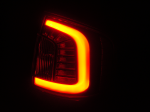- Forum Supporters
-


- Elite Member
- Posts: 16,043
- Location: Beltsville, MD
- Logged
An article on Ford's climate controlled seating (thanks, Z!):
https://www.facebook.com/notes/fordpartscom/fordpartscom-parts-tip-stay-cool-know-about-climate-controlled-seats/223295744373477/QuoteFordParts.com Parts Tip: stay cool: know about climate controlled seats
July 22, 2011 at 12:11pm
Climate controlled seats have become an option of choice on high-end vehicles over the past few years. Vehicles equipped with these systems are now coming out from under the umbrella of manufacturer warranties and they represent a potential new profit stream for aftermarket repair facilities.
As with all new types of automotive systems, the first step in accurate diagnosis and service is to understand how these seats work. Let's look at how Ford and Lincoln-Mercury climate controlled seats operate.
There is a thermo-electric device (TED) located within each front seat cushion and backrest.
The TED uses a ''Peltier'' circuit of P-type and N-type semiconductors connected in series using copper electrical conductors. Sandwiched between the semiconductors are insulating ceramic plates.
When current is applied to the TED, one side releases energy as heat, while the opposite side absorbs energy and gets cold.
By reversing the current flow, the hot and cold sides reverse.
The seat temperature is monitored and adjusted by a dual climate control module (DSCM).
Ford uses three different variations of these systems, so you will have to inspect the vehicle in order to identify its exact nomenclature.
During normal operation:
Cabin air is drawn through the seat fan motor and distributed to each of the TED modules located in the seat cushion and backrest.
The TEDs then heat or cool the air.
The air is then directed into the foam pad surface.
Channels in the surface of the foam pad are used to distribute the air along the surface of the seat.
Once the system is activated, the DCSM controls the heating/cooling modes and the fan motor speed based on the control switch settings.
What steps can we take if a customer comes in with a climate controlled seat that's not heating or cooling? Look for the following:
Does the seat indicator light on the Climate Controlled Seat Panel light up? If not, look for an issue in the power system.
Does the Message Center in the instrument panel indicate a climate control seat fault? If so, use a scan tool to retrieve codes from the DSCM.
Are the blower motors for each seat working?
In fact, blower motor issues are the most common source of climate controlled seat concerns. And in many cases the culprit is the filter on the motors.
Of course the filter is beneath the seat, so the napkins from the fast food chain that get kicked under the seat may get sucked into it. And if the vehicle owner is a pet lover, animal hair will accumulate there. So a filter inspection should be your first step.
Be aware that a restriction of airflow to the TED, may cause it to overheat. This will likely result in DTCs, and cause the seat to enter a recovery mode that disables the TED but runs the blower motor to cool it down. Once the airflow restriction is removed, the seat will resume normal operation.
Although there are other potential faults that can affect the operation of these seats, air filter concerns are by far the most common. Service publications can help when diagnosing individual component or circuit faults, and be aware that when servicing these systems you will also have to interact with the supplemental restraint system.
Climate controlled seat technology varies between car manufactures, but as with all vehicle systems they will require service. Your understanding of these seats, in combination with your automotive service skills can make these seats a new source of profit!

2007 Ford Edge SEL, Powerstop F/R Brake Kit, TXT LED 6000K Lo & Hi Beams, W16W LED Reverse Bulbs, 3BSpec 2.5w Map Lights, 5W Cree rear dome lights, 5W Cree cargo light, DTBL LED Taillights
If tuned: Take note of the strategy code as you return to stock (including 3 bar MAP to 2 bar MAP) -> take car in & get it serviced -> check strategy code when you get car back -> have tuner update your tune if the strategy code has changed -> reload tune -> ENJOY!